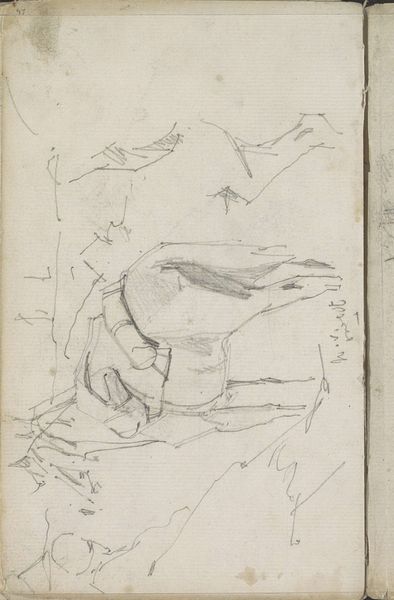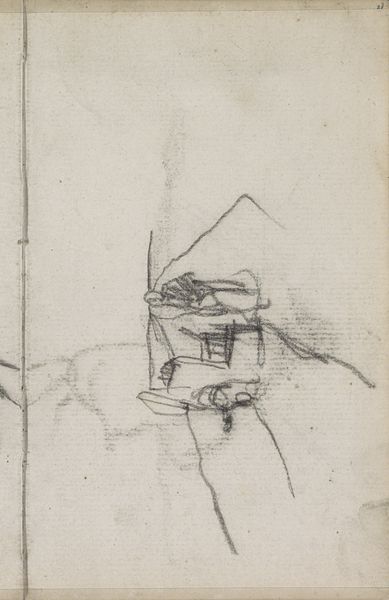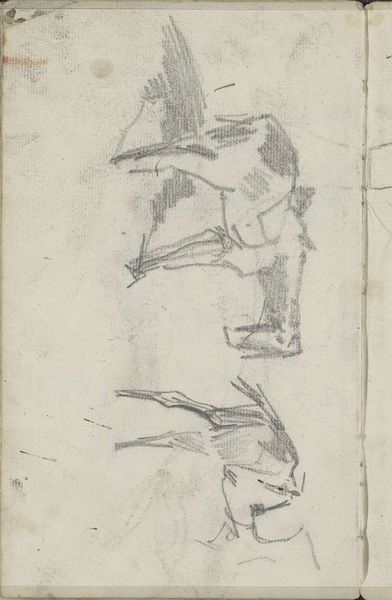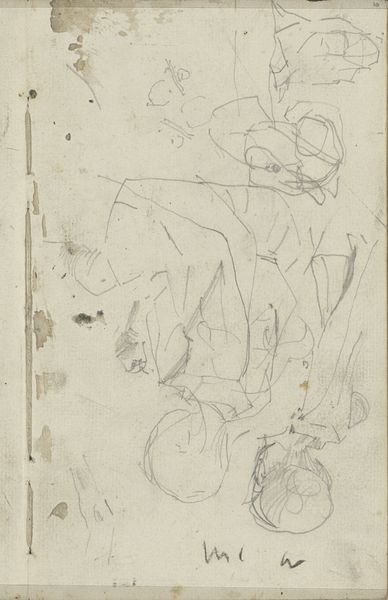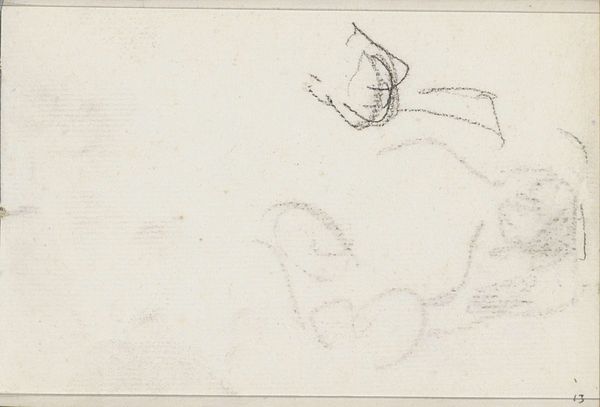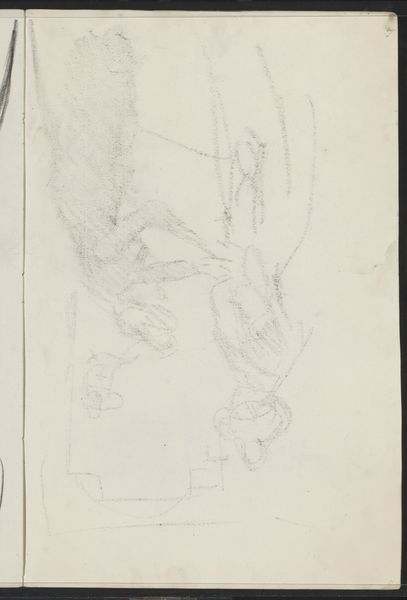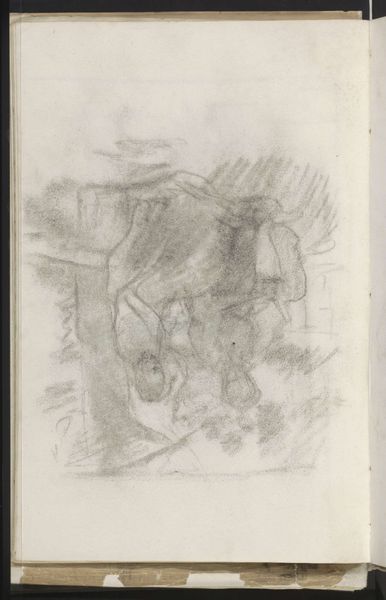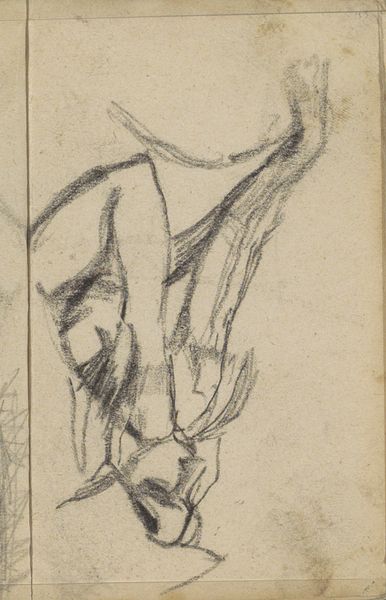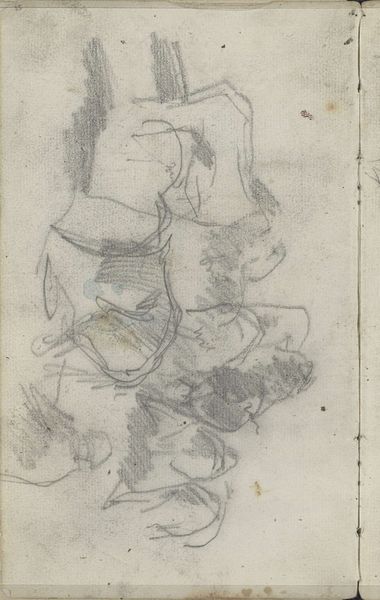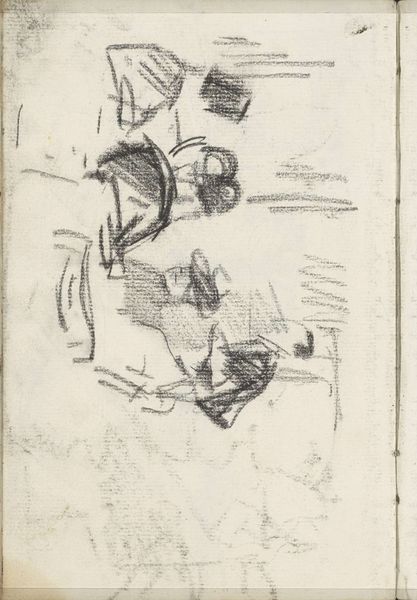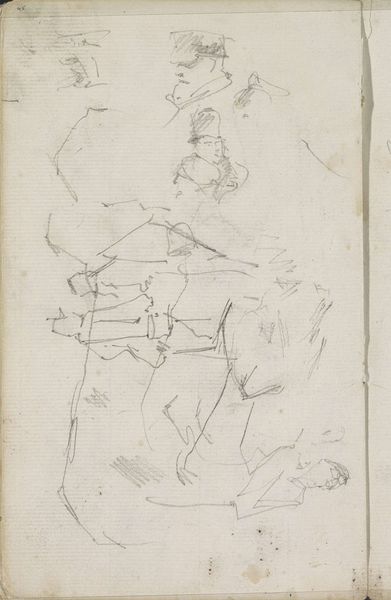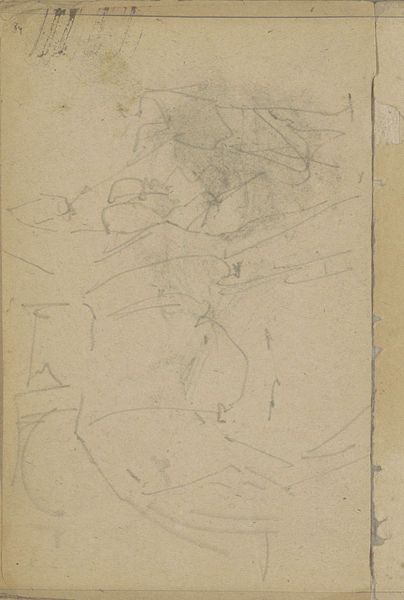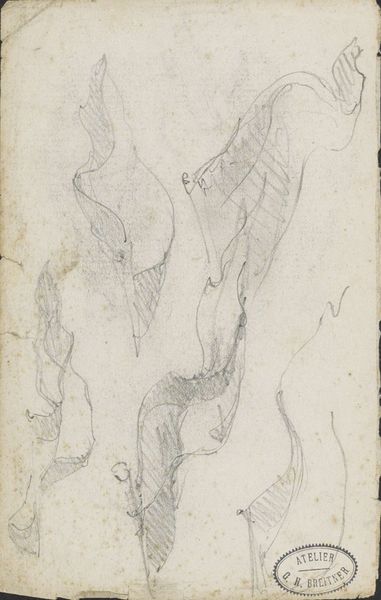
drawing, pencil, graphite
#
portrait
#
drawing
#
impressionism
#
pencil sketch
#
pencil
#
graphite
#
realism
Copyright: Rijks Museum: Open Domain
Curator: This graphite drawing, titled "Handen," was created by George Hendrik Breitner between 1883 and 1885. It's currently held at the Rijksmuseum. The immediate impression it gives is one of stark, unfinished movement. Editor: Indeed. I am struck by how provisional the drawing seems. The use of graphite provides a range of tone but leaves so much unsaid, unresolved. One hand seems to hold something – a tool perhaps – while the other dangles in space. I wonder about their symbolic weight, the active versus the passive hand. Curator: From a purely formalist perspective, it is precisely that ambiguity that provides its visual interest. The tonal gradations created through hatching give the subject matter volume, while its unfinished status contributes to its dynamism. The materiality of the medium is crucial here: the tooth of the paper catches the graphite, and the image emerges, seemingly spontaneously, from the surface. Editor: Precisely. And given Breitner's broader artistic inclinations, I see a deeper resonance. The hands, perpetually poised for action yet suspended, evoke themes of anticipation. Hands, throughout history, have signified everything from labor to power, from benediction to damnation. In a psychological frame, they become the locus of action, of intent, of a very specific potential yet unrealized in this particular image. The image hovers in an unformed symbolic space, evoking possibilities rather than settling into certainties. Curator: That suspension of certainty is indeed key. What the viewer perceives in its incompleteness *becomes* part of the meaning. We impose a visual narrative upon the gestural quality inherent in the rendering itself. Without a clearer definition of form and intention, the line becomes meaning in its own right. Editor: An interesting convergence of artistic interpretation and artistic agency, isn't it? One drawing can encompass both the objective artistic composition, and the historical, psychological projection the viewer infuses within the piece. I come away feeling a sense of unease and unresolved potential, it prompts further questioning more than understanding. Curator: And therein lies its aesthetic potency, I believe. The interplay between the artistic choice and our engagement creates a viewing experience that exists far beyond the sum of its visual components. Editor: Agreed. An arresting glimpse, into a dynamic relationship.
Comments
No comments
Be the first to comment and join the conversation on the ultimate creative platform.
